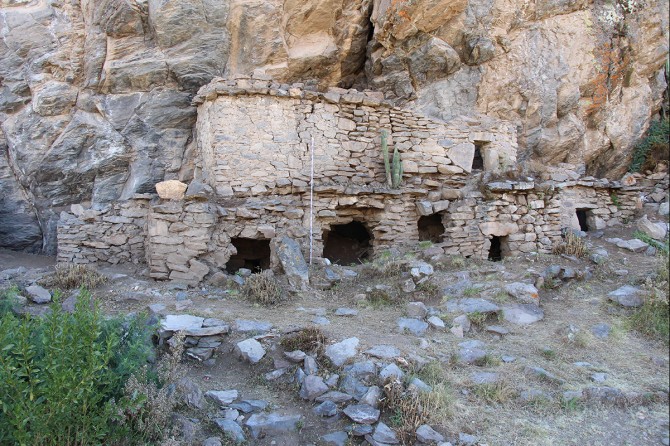Infant skull binding may have conveyed privilege in ancient Andes
By Linda B. Glaser
The idea of binding and reshaping a baby’s head may make today’s parents cringe, but for families in the Andes between 1100-1450, cranial modification was all the rage.
Like Chinese foot binding, the practice may have been a marker of group identity. Its period of popularity in what is now Peru, before the expansion of the Inca empire, was marked by political upheaval, ecological stress and the emergence of new cultural practices. In a study published in the February edition of Current Anthropology, Matthew Velasco, assistant professor of anthropology, explores how head-shaping practices may have enabled political solidarity while furthering social inequality in the region.
Velasco analyzed hundreds of human skeletal remains from multiple tombs in the Colca Valley of highland Peru and discovered that before 1300 most people did not have modified heads. He found that the number of individuals with cranial modifications increased over time, from 39.2 percent to 73.7 percent during the later portion of the Late Intermediate Period.
Skeletal samples of two major ethnic groups showed that the Collaguas employed methods to make their heads assume a longer, narrower shape, while the Cavanas sought to make their heads wide and squat. Eventually, the elongated head shape of the Collaguas became the predominant style of modification in the upper Colca Valley. According to Velasco, this shift toward embodying a shared identity may have strengthened ties between groups engaged in protracted conflict with outsiders, including the Incas.
“The increased homogeny of head shapes suggests that modification practices contributed to the creation of a new collective identity and may have exacerbated emerging social differences,” Velasco said. “Head shape would be an obvious signifier of affiliation and could have encouraged unity among elites and increased cooperation in politics.”
Velasco found diversity at the local level: modified and unmodified heads buried in the same tomb, despite having apparently different life experiences. “So it doesn’t seem that cranial modifications are strictly an ethnic distinction,” Velasco said.
Whether head modification conferred distinct privileges and higher status is unclear, but Velasco found bio-archaeological evidence that modified females possessed greater access to diverse food options and were less likely to encounter violence. Cranial modification thus appears to be a factor in societal inequality, Velasco said.
Examining bones for signs of disease gives researchers significant information about childhood health. For example, the marrow in cranial cavities expands with poor nutrition or anemia, leaving identifiable marks – porous lesions – on the adult skull. “But there’s no clear indication that infants who had cranial modification were at higher risk of infant mortality,” Velasco said. He noted that the brain is malleable, so the volume of the brain doesn’t change with cranial modification, just the shape of the cavity.
One explanation for the cranial modifications is offered by a 16th-century Spanish colonial document Velasco examined, which described groups molding skulls into the shape of the volcano from their origin myth. “If this is true, then cranial modification reflects a deeply religious worldview and was fundamental to a person’s being and existence, and not simply a fashion statement,” Velasco said.
A grant from Cornell’s Institute for the Social Sciences will allow Velasco to explore whether cranial modification marked children with a privileged life experience, as he suspects, such that individuals with modified heads were buffered from environmental and social stressors during childhood, such as malnutrition or exposure to pathogens. This pilot study represents the first phase of Velasco’s comparative investigation into the health and way of life of distinct socio-economic segments of the Colca Valley population, to better understand how regional landscapes of health and disease structured persistent inequalities under the Inca and Spanish colonial regimes.
Linda B. Glaser is a writer for the College of Arts and Sciences.
Media Contact
Get Cornell news delivered right to your inbox.
Subscribe

